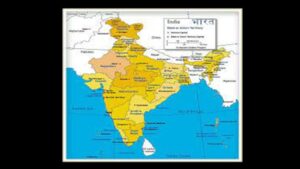Table of Contents
INTRODUCTION
The basic difference between a State and a Union Territory is that union territories are directly ruled by the union government, while states have a separate government for administrative purposes.
India is one of the largest countries in the world. Administrative powers and responsibilities of the country are divided among the central government and various units in the form of states and union territories. India is a land of 28 states and 8 Union territories, with each sharing a different story or fascinating past like UTs of Daman and Diu were under the rule of the Portuguese. At the same time, Puducherry was under the rule of the French having different cultures from their surrounding states.

After the repeal of the special status of Jammu & Kashmir in July 2019, on October 31, 2019, the Indian state of Jammu & Kashmir was bifurcated into two union territories:
- Jammu & Kashmir
- Ladakh
What are Union Territories?
Union Territories are ruled directly by the Central Government has a Lieutenant Governor as an administrator, who is the representative of the President of India and appointed by the Central government. Union Territories have no representation in the Rajya Sabha except Delhi and Puducherry.
Union Territory is a small administrative unit that is ruled by the Union. The Union Territories are controlled and administered directly by the Central Government.
What is a State?
States are explained as the administrative unit that has its elected government, which has the right to frame its laws. It has its own Legislative Assembly and the Chief Minister, for administration. The Governor acts as the representative of the President, in states.
How Delhi and Puducherry are different from other union territories?
In India, all the states and three union territories, i.e. Puducherry, Delhi, Jammu, and Kashmir possess elected legislature and government.
There is a total of 9 union territories in India, out of which 3, i.e. Jammu and Kashmir, Delhi, and Puducherry, have their elected members and the Chief Minister, as these are granted with partial statehood, by amendment to the Constitution.
These two possess their own legislative assembly and executive council and operate like states. The remaining union territories are controlled and regulated by the Union of the country, that’s why named union territory.
Union territories of India
- Andaman and Nicobar Islands
- Dadra and Nagar Haveli
- Chandigarh
- Daman and Diu
- Lakshadweep
- Puducherry
- Delhi
- Ladakh
- Jammu and Kashmir
Evolution of States and Union Territories in India
Our 28 states and 8 Union Territories have come out from the two categories of political units:
- The British Provinces
- The Princely States
India as an independent nation started with a total of 28 states classified into four categories:
- Part A: Nine erstwhile governor’s provinces of British India
- Part B: Nine erstwhile princely states with legislatures
- Part C: Erstwhile chief commissioner’s provinces of British India and some of the erstwhile princely states. These Part-C states (in all 10 in number) were centrally administered
- Part D: The Andaman and Nicobar Islands
Check the states in the above-mentioned parts at the time of India’s independence
| Part A States | Part B States | Part C States | Part D States |
| Assam | Hyderabad | Ajmer | Andaman & Nicobar Islands |
| Bihar | Jammu & Kashmir | Bhopal | |
| Bombay | Madhya Bharat | Bilaspur | |
| Madhya Pradesh | Mysore | Cooch-Behar | |
| Madras | Patiala & East Punjab | Coorg | |
| Punjab | Rajasthan | Delhi | |
| Orissa | Saurashtra | Himachal Pradesh | |
| United Provinces | Travancore-Cochin | Kutch | |
| West Bengal | Vindhya Pradesh | Manipur | |
| – | – | Tripura |
Later, with the States Reorganisation Act (1956) and the 7th Constitutional Amendment Act (1956), the distinction between Part-A and Part-B states was done away with, and Part-C states were abolished. Some of them were merged with adjacent states and some others were designated as union territories.
FAQs
What is the basic difference between a State and a Union Territory?
A state is a division under an Indian constituency, which has a separate government, whereas, a Union Territory is ruled directly by the Central Government by a Lieutenant Governor as an administrator, who is the representative of the President of India and appointed by the Central government.
How many States and Union Territories are there in India?
In 2020, India has a total of 28 States and 8 Union Territories.
Who is the administrator of the States and Union Territories?
In terms of administrator, there is a difference between states and union territories. States are headed by a Chief Minister and Union Territories by Lieutenant Governor.
How are Union Territories different from States?
During independence and due to the constitutional provisions, Union Territories were created either because they were too small in area to be called a state or were not entirely a part of the country. Thus, they were named Union Territories depending upon the Union Government.
Why is India divided into States and Union Territories?
For better administration of the entire country, India was divided into states and Union territories.
